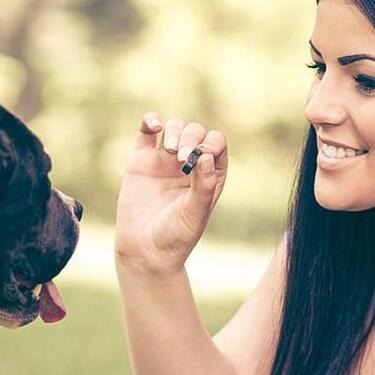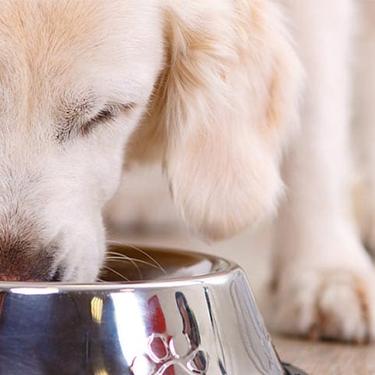
-
Find the right food for your pet
Take this quiz to see which food may be the best for your furry friend.
Find the right food for your pet
Take this quiz to see which food may be the best for your furry friend.
Featured products
 Small & Mini Savory Stew with Chicken & Vegetables Dog Food
Small & Mini Savory Stew with Chicken & Vegetables Dog FoodA delicious complement to the nutrition of Science Diet Small & Mini 7+ dog food
Shop Now Adult Healthy Cuisine Roasted Chicken, Carrots & Spinach Stew Dog Food
Adult Healthy Cuisine Roasted Chicken, Carrots & Spinach Stew Dog FoodDelicious roasted chicken paired with tender vegetables in a succulent stew
Shop Now Adult 7+ Perfect Digestion Chicken, Whole Oats & Brown Rice Recipe Dog Food
Adult 7+ Perfect Digestion Chicken, Whole Oats & Brown Rice Recipe Dog FoodScience Diet's breakthrough nutrition supports ultimate digestive well-being & healthy microbiome for dogs age 7+
Shop NowFeatured products
 Adult 7+ Tender Tuna Dinner Cat Food
Adult 7+ Tender Tuna Dinner Cat FoodWith delicious chunks in a decadent gravy
Shop Now Adult 7+ Senior Vitality Chicken & Vegetable Stew Cat Food
Adult 7+ Senior Vitality Chicken & Vegetable Stew Cat FoodImproves Everyday Ability to Get Up & Go
Shop Now Adult Savory Entrée Can Variety Pack Cat Food
Adult Savory Entrée Can Variety Pack Cat FoodPrecisely balanced nutrition with the delicious taste of savory minced chicken to help fuel the energy needs of cats during the prime of their life
Shop Now -
Dog
- Dog Tips & Articles
-
Health Category
- Weight
- Food & Environmental Sensitivities
- Urinary
- Digestive
- Joint
- Kidney
-
Life Stage
- Puppy Nutrition
- Adult Nutrition
- Senior Nutrition
Cat
- Cat Tips & Articles
-
Health Category
- Weight
- Skin & Food Sensitivities
- Urinary
- Digestive
- Kidney
-
Life Stage
- Kitten Nutrition
- Adult Nutrition
Featured articles
 Why Are Dogs and Cats So Cute?
Why Are Dogs and Cats So Cute?If waggy puppy dog tails and furry kitten yawns make you swoon, you're not alone. Why are cats so cute? And, dogs too! Let's find out!
Read More Do Dogs and Cats have Belly Buttons?
Do Dogs and Cats have Belly Buttons?Learn whether cats & dogs have belly buttons like humans, what the function is, and if there are any health concerns associated with it.
Read More Does My Pet Hate Me?
Does My Pet Hate Me?Learn tips for bonding with your pet if you've ever thought, 'My dog doesn't like me, or 'Why do I have a standoffish cat?'
Read More -


Training your furry friend is an important part of being a dog parent; plus, it has many benefits, including socialization and obedience. If you're looking to incorporate a training tool, a dog whistle may be a good option for you and your pup.
But as a pet parent, you may be wondering: How does a dog whistle work? Do dog whistles hurt dogs' ears? What are the advantages of using a whistle? These are important questions to consider when looking into using a dog whistle.
How Dog Whistles Work
Whistles have been used for dog training and communication for generations. Prior to that, humans communicated with their dogs by whistling the old-fashioned way, with their breath. You can use a whistle to "talk" with your dog and establish a behavioral routine, just as you do with verbal commands or clicker training for "sit" and "stay" or playing fetch.
Dogs respond to even the quietest of whistles because they hear at a much higher frequency than humans. "Dogs and people hear about the same at low frequencies of sound (around 20Hz). This changes at high frequencies of sound, where dogs hear up to 70-100kHz, much better than people at only 20kHz," say scientists at the University of Adelaide in Australia, and dogs "hear sound frequencies at least three times as high compared to people." It may seem as if dogs react to a noise that's not there when, in reality, they're highly sensitive to something we can't hear.

You may have to try out a few different types of whistles to see which one offers you the range of sounds you (and your dog) prefer. Start by learning how to use the whistle properly (practice, practice, practice), and then play around with the sounds to figure out which tones will work for which commands.


Tasty Tips
Audible and Silent Whistles
There are two types of whistles to choose from: audible or silent — with "silent" in this case meaning silent for humans, not dogs. Some whistles are equipped with adjustable pitches, too.
Audible whistles are helpful when you're working out the sounds you want to use and ensure that you're being consistent. This style looks much like a whistle used at sporting events and, in fact, it's used during herding dog events.
Many dog parents prefer silent whistles because there's less noise interference for people. This type of whistle, invented in 1876 by Sir Francis Galton, was used to test hearing levels in humans, cats and dogs. The term "ultrasonic whistle" is more accurate because, as noted above, the whistle isn't silent — it emits ultrasonic sounds to which dogs respond. According to researchers at Psychology Today, the advantage of this type of whistle is that these sound signals travel farther than the human voice and, therefore, can reach dogs at farther distances.
Do Dog Whistles Hurt Dogs' Ears?
A dog whistle won't harm your dog when used properly. Read the manufacturer information carefully and speak with your veterinarian about any questions you have.
Because dogs hear at a much higher frequency than humans, they're naturally more sensitive to sounds. Don't use the whistle close to their ears, and avoid blowing it at full strength. As Dr. Pippa Elliott, BVMS, MRCVS, writes for Petful, these "noises to the top of the dog's ability to hear can cause pain if they are loud enough. It's like the difference between a referee blowing a whistle on the football field versus blowing that same whistle directly in your ear." That's a big difference.
Be mindful of other animals in your home and surroundings, too. Cats hear high-frequency sounds even better than dogs and will respond accordingly. Always remember that what seems like a benign noise to you can be disruptive and uncomfortable for your dog (and cat).
As with any behavior training, using a dog whistle consistently and patiently is the key to success.


Christine O'Brien is a writer, mom, and long-time cat parent whose two Russian Blues rule the house. Her work also appears in Care.com, What to Expect, and Fit Pregnancy, where she writes about pets, pregnancy, and family life. Find and follow her on Instagram and Twitter @brovelliobrien.
Related products
Related articles

Learn the the dangers of feeding your dog chocolate, which types are most dangerous, and what to do if you discover that they have consumed chocolate.

Learn about choosing the right dog food to help ensure your adult dog will receive the correct balance of nutrition.

Proper nutrition for your pregnant or nursing dog is vital to her and her puppy's health. Learn what you should do provide her with the proper nutrients.

Learn how today's wet dog food blends have gotten a face lift, and how you'll provide your dog the nutrition he needs in the form he loves.

Put your dog on a diet without them knowing
Our low calorie formula helps you control your dog's weight. It's packed with high-quality protein for building lean muscles, and made with purposeful ingredients for a flavorful, nutritious meal. Clinically proven antioxidants, Vitamin C+E, help promote a healthy immune system.
Put your dog on a diet without them knowing
Our low calorie formula helps you control your dog's weight. It's packed with high-quality protein for building lean muscles, and made with purposeful ingredients for a flavorful, nutritious meal. Clinically proven antioxidants, Vitamin C+E, help promote a healthy immune system.

